Features
Colby Vexler is a designer, writer and researcher. After graduating from a Masters of Architecture degree he has worked on projects across domestic settings, institutional environments and commercial contexts where he explores the surplus value of aesthetic nuances latent in high and low forms of contemporary culture. Colby is currently a Studio Leader in the Masters Program of the Architecture Department, Melbourne School of Design at The University of Melbourne. He is also writing his MA thesis at the School of Culture and Communication on the connections between aesthetics, philosophy, poetics and various modes of architectural theory, representation and production.
Justin Clemens is Associate Professor in the School of Culture and Communication at The University of Melbourne. He writes extensively on Australian art and literature. His books include Lacan Deleuze Badiou (Edinburgh UP 2014), co-written with A.J. Bartlett and Jon Roffe, and Psychoanalysis is an Antiphilosophy (Edinburgh UP 2013).
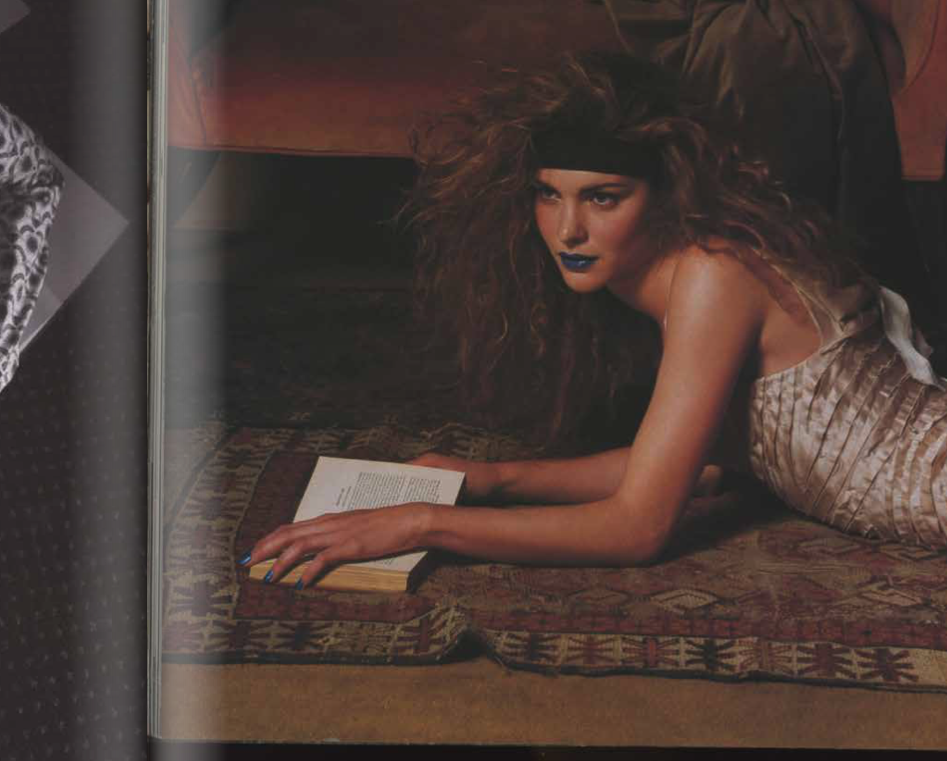
They Look Of Reading,
We Look From Lacking
Pensive yet unaware, they are not here, but elsewhere; or so it seems.
Disrupted but unoffended, they pause from absorption.
And yet in each there is something domestic: contained, tended to and cared for. Cultivated but familiar, even protected. Luxuriously.
So many levels and sequences of material organisation and its abstraction. A history of printing. A history of painting. Histories of the book. The history of reading. The history of women reading. The relation between print and image. The relation between clothes and the body. The relation between mind and body. The technologies of reproduction of word and glyph. The histories of colonialism and capitalism. The transformation of bodies - mainly of women - into images that sell commodities for the real bodies to become images in their turn. The relations that disclose these relations. And hide them too. There is exposure in this abstraction, but so dense and compressed it is almost impossible to know where to begin and end with it. Is the critique already in this abstraction and this exposure, or does there remain, even in the absolutely self-evident nature of what’s being shown, a gap of non-recognition of what’s clearly there? Is it the job of the critic to declare the obviousness that is already there? Or is the patent, the clear and distinct, the self-evident, actually not quite so self-evident? Or is it that there is a constitutive evasiveness in what frankly presents itself? Not to draw it out is to fail the challenge of what’s shown; yet, to do so, is also to fail the challenge of what’s thereby concealed.
This compacted fictional abstraction - its hyperbolic mimesis - is nonetheless not unrealistic. For:
[w]hat distinguishes fiction from ordinary experience is not a lack of reality but a surfeit of rationality. That is the thesis formulated by Aristotle in the ninth chapter of the Poetics. Poetry, by which he means the construction of dramatic or epic fictions, is ‘more philosophical’ than history because the latter says only how things happen, one after the other, in their particularity, whereas poetic fiction says how things can happen in general. Events do not occur in it at random. They occur as the necessary or verisimilar consequences of a chain of causes and effects. Such a chain can be shown to produce the most general determinations of human existence - the fact of knowing happiness or misfortune, and of going from one to the other. This chain is no longer a fatality imposed by a divine power. It is inherent to the order of human action and to the relation it entertains with knowledge. [1]
Fashion magazines are the poetry of contemporary capitalism. Even if today ‘general culture’ publications have nominally replaced the classic post-WWII fashion magazine as the epitome of the currency of the contemporary, the point remains: that these assemblages are themselves abstract orders of concatenated operations dedicated to extracting and presenting ‘the most general determinations of human existence.’ The hyperrationality of the fiction of the book in photography in fashion magazines builds a chain that attempts to bind all the figures together, both in particular and in general.
For what separates an editorial photograph from a commercial campaign and an image made present through the careful words of fiction? Somewhere between a portrait and still life, each begins similarly. Conceptualising, strategizing, slowly materialising. Absorbing and theatricalising. Reviewing and reframing. Editing many times over. Overthought, too staged; too natural, not “candid” enough.
When thinking about it, there is little distance between the three, by way of process and appearance. In fact, what more is there to do in each than to consider the arrangement between character and figure, objects and subjects, scene and event, in order to stage the effects of their amalgamation? But, by the same token, the differences remain paramount if obscure, in their production as much as their effects.
Regardless of any nuances, the editorial photograph, commercial campaign, and the image brought forth by fiction are certainly no ordinary experience - even if they appear as such. This is because reception is expected: somewhere between apprehension and anticipation these images attempt to construct their own perceptual outcome. How will it be read? Are they well read? Or is the appearance of such simply enough? After all, each relies on props, but in the most sincere sense.
But for whom? Whose eyes are these? The reader, the viewer, the spectator, or the general audience? The narrator, the creative director, the stylist, or the photographer? The critic or the cultist? Perhaps they are the eyes of all, collecting themselves into a crowd, but thereby detached from their own bodies. But what sort of eyes and what sort of bodies? Local and/or general? Structures and/or persons? Generalities and/or particulars? Innumerable eyes of others planted within us whenever we try to read or pretend to read these images of persons reading or at least pretending to read. So whose eyes are we reading whose bodies with then?
Either way, strategy will attempt to decide; whether it will ever manage to fix on who’s whose is unlikely.
Why do we - and the models within the images - find ourselves so often looking at books in fashion magazine photography? And how do we imagine the indiscernible difference between looking and reading when we look at people looking at books? Especially when they must look like they’re reading in order for us to read the image as if we were looking at real reading while knowing they’re not. The delusional asymmetry of the situation is key: they must look like they aren’t looking like they know they’re being looked at. They look of reading; we look from lacking.
How and why has the book become such an important prop within the fashion industry’s rhetoric?
Of course, there is the obvious: the book’s symbolic value. Aesthetically, culturally, and socially. Books appear to have the power to imbue and project, demanding an intellectual affinity or aversion, but rarely an indifference. Without even being read, the image of the book transforms its situation. Figure becomes model, model becomes character, character becomes type, type becomes scene. Stereotypes incite dissociation, but particularity perpetuates admiration and desire. From generality to specificity and back again, the book as a prop suspends temporality and constructs thematics: identity, emancipation, knowledge, luxury, indulgence, and of course appropriation.
But to judge a book and its beholder by their cover image reduces their presence to a mere prop, without thinking about the prop’s proper qualities. Yet - perhaps this is strategic! For every book simultaneously conceals and reveals - a feature inherent to its very structure - which, as a prop, has an uncanny ability to hold up, support or structure a moment of appearing in a unique way. It is in such appearing that the book takes on an almost-mystical role: that of a signature physical object, a passive subject, and an affective device for sublimity. The book in the photographs assembled in fashion magazines is ultimately an index of such magazines attempting to represent their own transcendence in the image of their other.
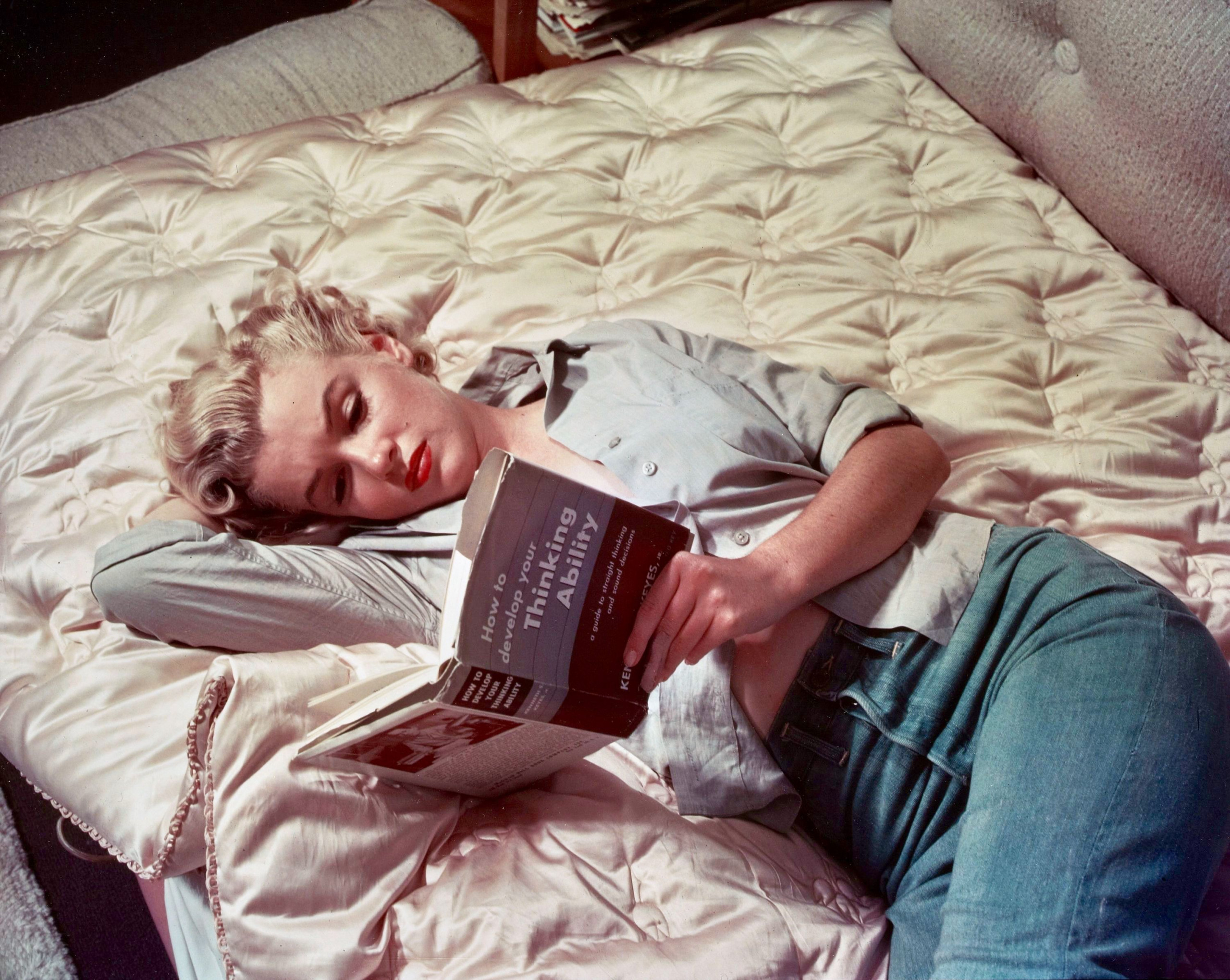
Three instances
Marilyn Monroe reclines on an uncovered white duvet in what seems to be her own living room. One arm is bent behind her head, propping it forward. Her left hand holds a book, its title clearly legible: ‘How to develop your thinking ability’. Her brow is slightly furrowed, her folded legs tilting crossed out of shot. Her body lies idle, but her mind - and her image - are at work, concentrated, perhaps even slightly frustrated, by what she is reading. The scene is set: we see Monroe reading, although we cannot see what she is reading; in any case, she is being staged to look like she is reading so deeply she appears as if unaware of the camera’s presence. The book-as-prop becomes a double supplement. On one hand, it excessively absorbs her attention, suggesting that Monroe must “develop the ability to think”; on the other hand, it supplements the fact that such a development is not already tangibly and satisfactorily conveyed. We all already knew that Monroe was an avid reader, so this excessive reiteration threatens to render actuality itself strangely uncertain. Intended for a fashion publication - although John Florea’s photograph was not published at the time - its present hyperdissemination across such culture-oriented social media as Tumblr and Pinterest testify to its abiding success.
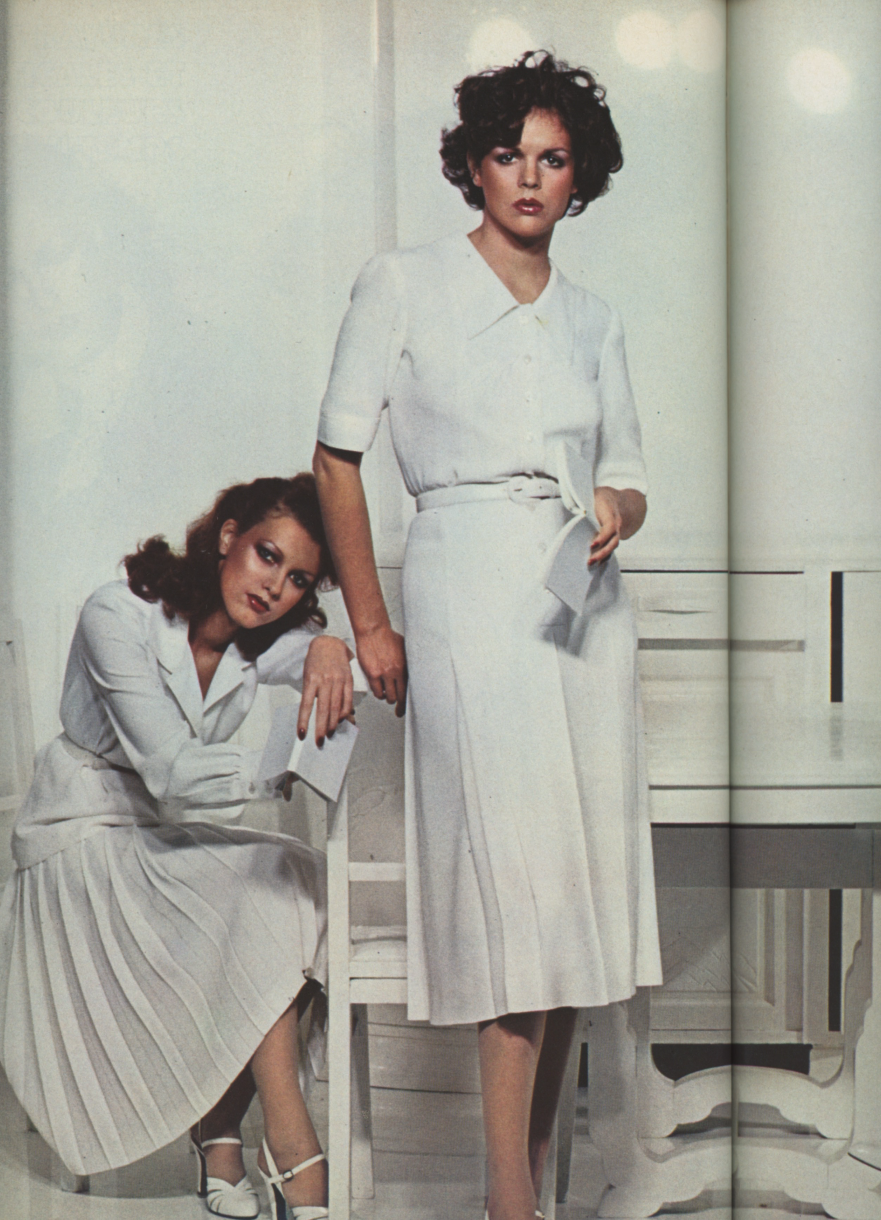
One sits, one leans. One of the marginal differences present here. White room, white chair, white bookshelf, white books, white clothes, white everything. Rendered white, figures, objects and subjects omit detail, appearing empty like evacuated props. Utterly theatrical, the scene sits in its own starkness, contrasting with Marilyn’s moment. Staring at the camera, stagy, vacuous, the two women show that they know that they’re being looked at. Looking at you looking at them. But, still, why are the books there? A study in composition? A practice in strategy? Yet is form enough to perpetuate its own negation?
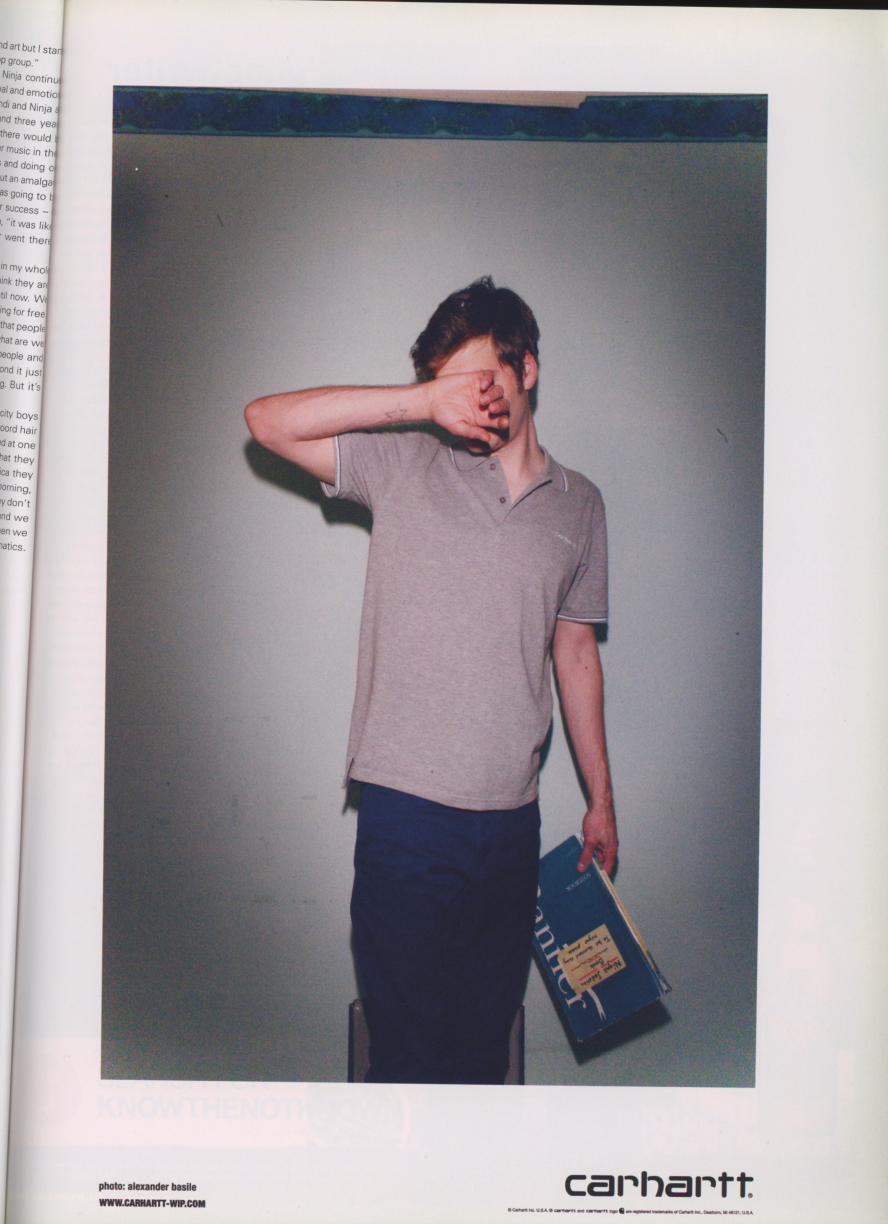
Spot lit, he was already in focus, and yet now he attempts to withdraw from theatricality because our presence has disturbed his absorption - that is now not there to be seen. The figure’s right hand obscures his face, preventing us from recognizing him; his left hand holds a book, a corner obscured behind one leg. He shows himself hiding from a gaze of which he is aware. His reading has been apparently been obstructed by our arrival. Reading, interrupted, by the attempt to capture it in action leaves a promise that, prior to the shot, there was indeed reading, and not just a theatre of reading.
These three instances do not depict or even indicate a reality, say, of ordinary experience, but rather the anticipated hyperrationality of their staging, which attempts to captivate attention by using the image of the book in apparently very diverse ways. This diversity, however, still turns around a fundamental aporia: that the image of the book is a tormenting otherness for any operations that seek to uncover and present an image of the world today. For the reading of books is a privileged sign of what inevitably withdraws from vision, from appearance, from showing, into the mysterious realms of the unrepresentable concept or thought. On the one side, a desperate attempt to image an immersion in materials that transports a figure from the world; on the other, a desperate attempt to deny the reality of immersion by making everything just a version of a performative exhibition.
Michael Fried has famously outlined a dialectic between absorption and theatricality in art history. [2] For Fried, a painter like Chardin was committed to the representation of absorption, that is, to depicting scenes of figures captivated by cards or blowing bubbles, such that it was as if the depicted figure was utterly unaware of being looked at by anybody else. Such a fiction simultaneously projects both the alleged affect of the intensity of producing the image itself, as well as the desire that the prospective viewer of such an image find themselves as captivated by the image as the figure within. Such absorption opposes itself to theatricality, the self-conscious expressiveness of a performing figure which is precisely performing to be looked at within the diegesis itself, which courts the gaze of the other, and seeks thereby to seduce by showing itself entirely. Such theatricality, as we have been discussing, threatens to turn the gamble of absorption into a minimal limit of theatricality, just another form of performance that denies its own performing.
In this context, we can see how contemporary fashion magazines are in fact belated parasites - whether knowingly or not - upon the struggle Fried discerns in eighteenth century painting. For many of these photographs, the image of the absorbed reader – exemplified here by Monroe - functions precisely as an immersive image of the figure become scene, a scene of captivation that the deployment of such photography demands from its viewers. But because such a deployment also cannot not theatricalise, it finds itself in a double bind: on the one hand, such absorption constitutively runs the risk of failing to cover up its own failure; on the other, when presentation seizes its own theatricality by attempting to ridicule or otherwise sideline the role of the book (for example, by admitting that it is a mere prop or a pedestal), it still betrays its own resentment at the codex form itself.
In a previous article about the role of representations of intellectual culture in contemporary fashion, we proposed the concept of the ‘metaprop.’ [3] A metaprop is an object that, while utterly quotidian and banal, nonetheless takes on certain mystical, contradictory qualities in particular representational spaces in order to indicate both its own supplementarity (e.g., it could be replaced indifferently by another quite different object) and its own irreplaceability (i.e., the book could not be replaced without losing its effects). A metaprop is at once self-negating and self-aggrandizing; it draws attention to itself as something indispensable, yet irrelevant; it indicates a limit function in representation. Here, the image of the book does precisely this for the fashion magazine, propping-up a desire which can never be appeased.
The book as a metaprop becomes the infrastructure to administer and render visible notions of identity, culture, taste and their respective absorptions, anticipations, appearances, appropriations and theatricalities - through a surfeit of purposive rationality. The plan is to make the planning appear careless, casual, incidental, unaware, candid, immersed in a sense of absence that seems barely present. The desire of the fashion magazine is to become a book in its obsessive assemblage of images, a book which will absorb its readers beyond any just-looking. But the fashion magazine recognizes its inability to do so, so it props itself up on the image of the book which then becomes the key image of a reflection on the limit of fashion magazines’s own powers, their sublime point of impossibility.
[1] Rancière, J. (2020). The Edge of Fiction, trans. S.Corcoran, Cambridge: Polity Press, p.1.
[2] Fried, M. (1980), Absorption and Theatricality: Painting & Beholder In the Age of Diderot, Berkeley: University of California Press.
[3] Vexler, C. & Clemens, J. (2019), ‘Fashion Dwells Intellectually’ in Press & Fold, Issue #1, Amsterdam: Warehouse.

They Look Of Reading,
We Look From Lacking
Pensive yet unaware, they are not here, but elsewhere; or so it seems. Disrupted but unoffended, they pause from absorption. — by Colby Vexler & Justin Clement

Experimental archives,
new fashion histories
The concept of the ‘archive’ seems to have captured once more the contemporary moment in fashion. — by Laura Gardner
From top to bottom
A header on a page is worn like a hat on the head. It is there as a part of a uniform that can indicate the wearers job, the books title and the stage of development in the narrative. — by Emma Singleton
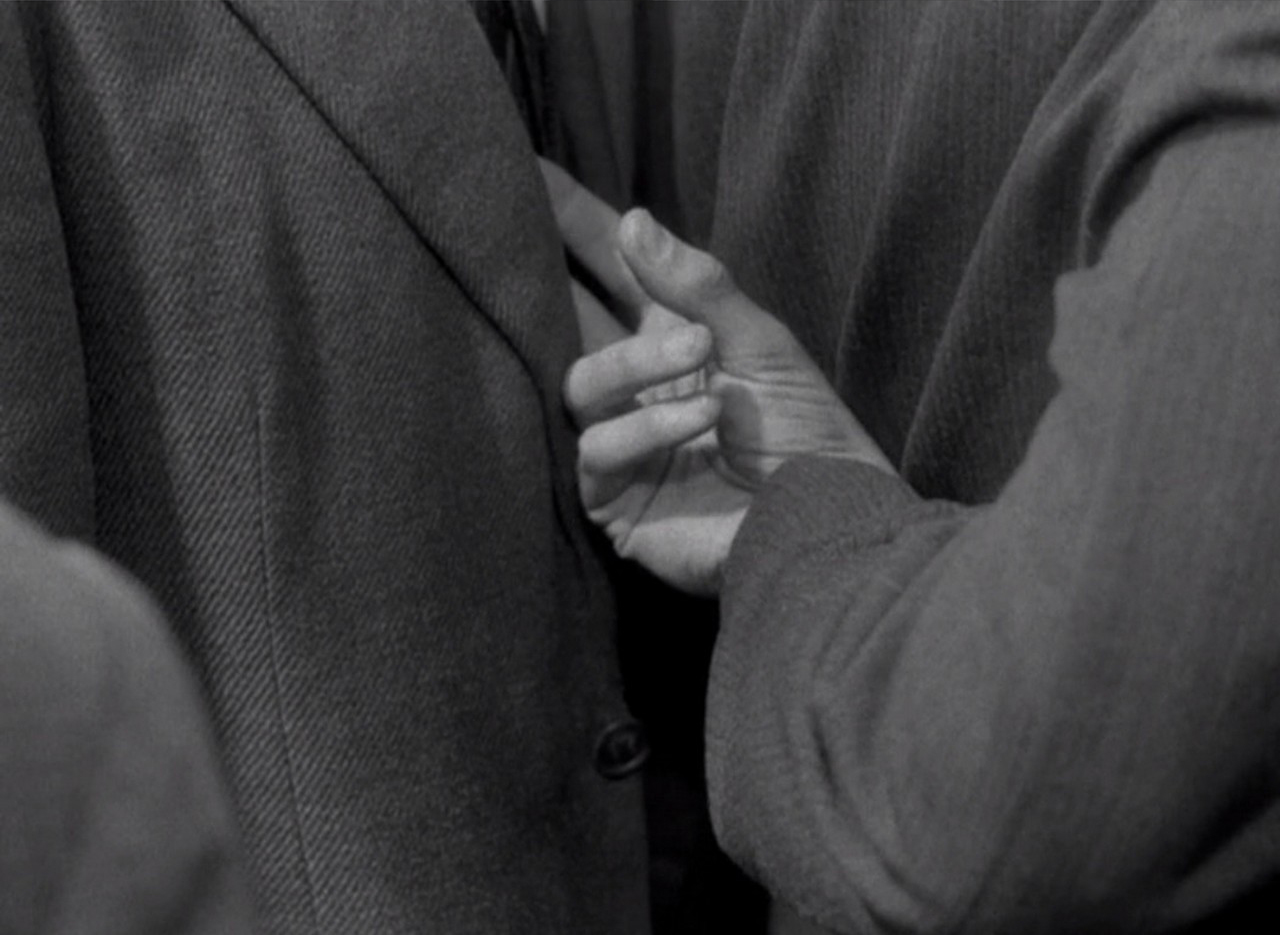
Her hand nuzzled
into his pocket
How the novel frees the garment of/from? fashion — by Femke de Vries
Keeping your heart in
a fabric padded pouch
Why do we wear our hearts on our sleeves? Why do we pad out our love as though its bound to hurt? Why does a heartbeat reverberate through the fabric of the skin? — by Emma Singleton